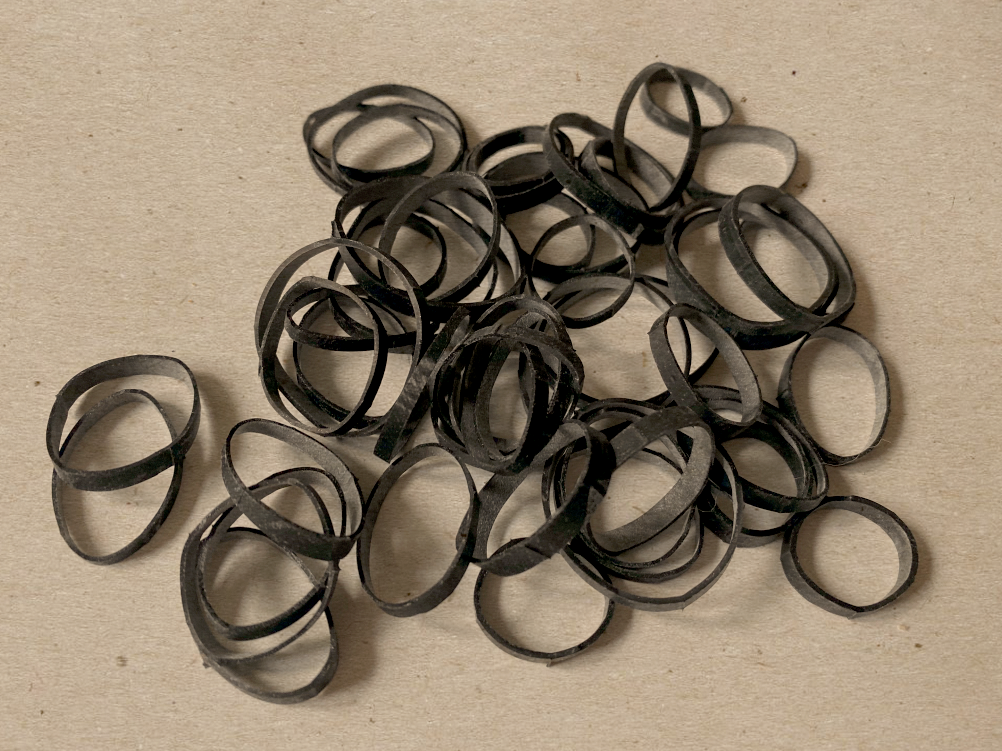Hands-on maker projects teach about the material lifecycle of inner tube rubber and its reuse opportunities
When the Rubber Leaves the Road—
Don’t Toss That Tube!
Keep material cycles going through direct reuse!
This K-5 Elementary School Module uses dimensional learning appropriate for social studies, art, science, and more to teach children about full material lifecycles and create trickle-up-education for a more sustainable circular economy.
Overview:
Working with bicycle inner tubes introduces students to rubber waste, dead end material flows, and unique opportunities found in the abundant materials around us
Students learn about the lifecycle of a bike tube and engage in hands-on, creative activities with the distinctive material
Module addresses nonrenewable resources while encouraging the reduction of human footprints
Module includes tips and techniques for preparing waste inner tubes and creating with this engaging “raw” material
Content aligns with CalRecycle’s Education and the Environment Initiative, Common Core Standards, Next Generation Science Standards, California Art Standards, and themes from NCSS National Curriculum Standards for Social Studies. (see applicable standards)
Essential Questions:
What is rubber, how is it harmful for the environment, and how can it be used more responsibly?
How do material lifecycles, recycling, and upcycling relate to bicycle inner tubes?
What are some options for direct reuse of bicycle inner tubes?
Maker Activities:
Click Maker Activities (below) to view lessons for Rubber Bands, Rubber Stamps, ReBands, and ReTies, and download all accompanying material
Suggested Grade Level Activities:
Kindergarten: 20 minutes –
Rubber Bands, Rubber Stamps
1st grade: 20-30 minutes –
All of the above plus ReBands Fidget Bands
2nd grade: 30-40 minutes –
All of the above
3rd grade: 40 minutes –
All of the above plus ReTies Multi-Use Ties
4th/5th grade: 40-50 minutes –
All of the above
Knowledge Objective:
About the creation, history, chemical makeup, and use of rubber
About the bike inner tube lifecycle and the impact rubber waste has on the environment
How students themselves could get involved in fighting rubber waste
How to assess materials for reuse, upcycling, and recycling
Mastery Objective:
Students will be able to use waste bike tube rubber to create art, craft and utilitarian objects
Gain experience in how curved and flexible/stretchy materials react when cut in different ways
Review ‘Collect & Prep’ for information on sourcing and preparing inner tubes in advance or with students depending on age group
Optional Entry Ticket Activity:
A few days before the lesson, ask students to check with family for bike inner tubes they
could bring to class
Motivational Activity:
Hold up the collection of bike tubes and ask the students if they know what these are. Tell them we are going to use bike tubes to think about material waste. Tell them we will think about material reuse instead and we will experiment with making a few things from this used material.
Summary Activity—Discussion Questions:
What are some solutions for decreasing waste generation?
What other things might be made from waste bike tubes?
What can you do personally to prevent bike tubes from going to landfill?
Extension Activities:
Visit a bike shop and gather tubes for future projects
Experiment with the creation of other products, jewelry designs, and sculpture forms
Learn about your city’s recycling program and what happens with rubber
Visit a local recycling plant, to learn how recycling works first hand
Discuss how reuse and upcycling opportunities can extend to other materials and help reverse the trend of increasing amounts of trash





